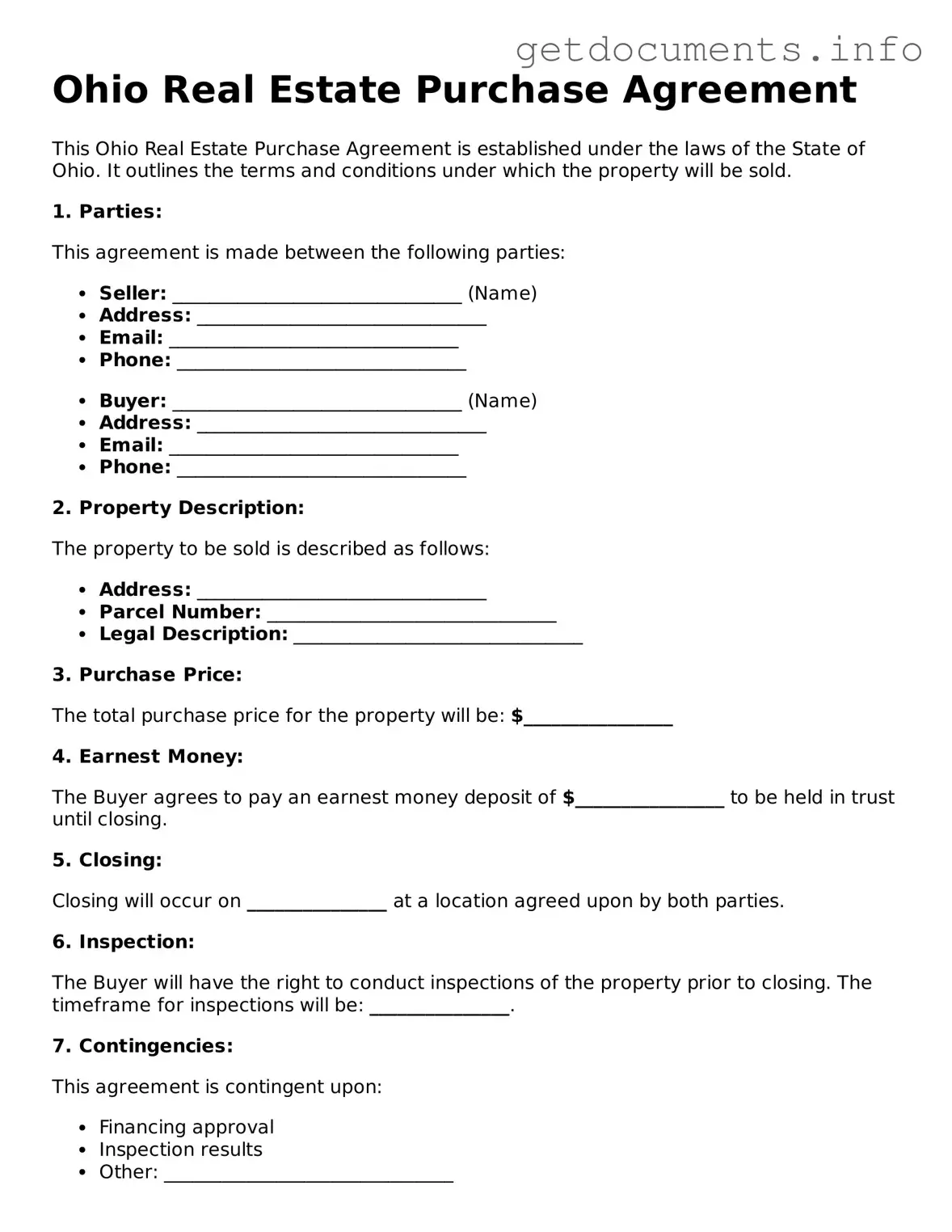In the realm of real estate transactions, the Ohio Real Estate Purchase Agreement form serves as a crucial document that outlines the terms and conditions under which a property is bought and sold. This form is designed to protect the interests of both the buyer and the seller, ensuring that all parties are on the same page regarding the sale. Key elements of the agreement include the purchase price, a detailed description of the property, and the closing date. Additionally, it addresses contingencies, such as inspections and financing, which can significantly impact the transaction's success. The form also stipulates the responsibilities of each party, including any disclosures required by law. By clearly laying out these essential components, the Ohio Real Estate Purchase Agreement facilitates a smoother transaction process and helps to minimize misunderstandings or disputes that may arise during the sale. Understanding this form is vital for anyone looking to navigate the complexities of buying or selling real estate in Ohio.
